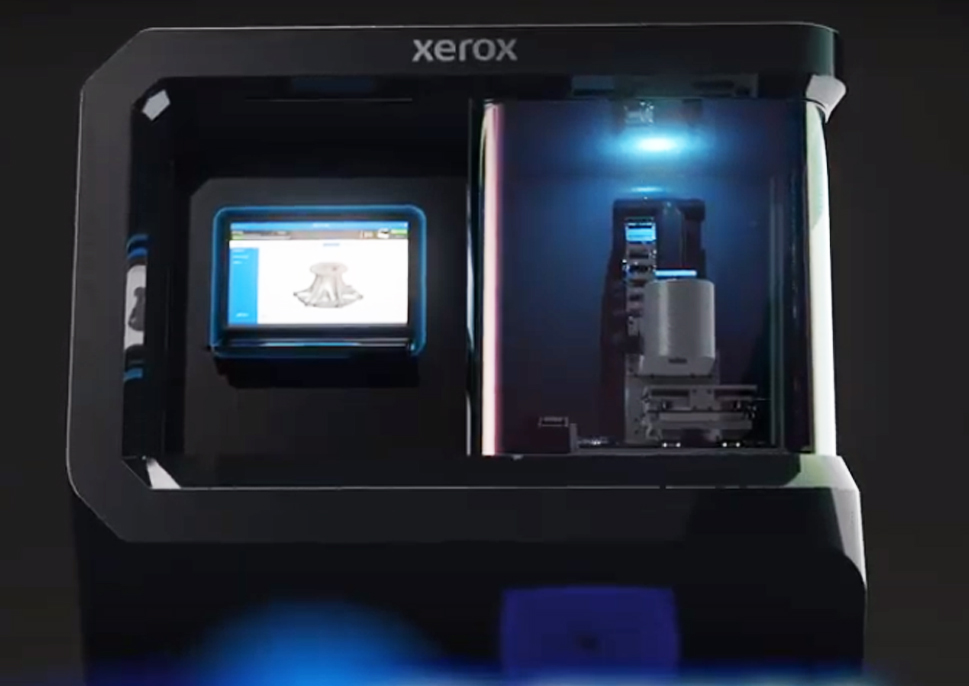Global digital document and printing firm Xerox has partnered with cloud computing and software company Oracle to allow new businesses born inside Xerox to launch and monetize their services more quickly.
By choosing Oracle’s integrated set of Oracle Cloud software offerings, new Xerox businesses can sell online, create orders, process invoices, track performance and carry out financial planning within weeks, as opposed to several months. For Xerox’s 3D printing business, the team was able to stand up the IT infrastructure needed in just six weeks to “transact right out of the gate”, and can now use this as a template to future ventures.
“We’re able to operate in a very nimble way, where we can spin up a new business in just a few weeks, all without switching to a different platform,” said Naresh Shanker, Senior Vice President and Chief Technology Officer at Xerox. “That’s the beauty of the Oracle Cloud solution.”

Xerox’s increasing interest in 3D
Having historically traded in 2D rather than 3D printing, Xerox announced its intentions to develop a roadmap to “participate” in 3D printing back in 2018. Shortly after, the firm acquired liquid metal jet 3D printer manufacturer Vader Systems and made its Formnext debut in 2019 with a substantial presence at the show.
In the two years since, Xerox has continued its expansion into 3D printing, having lined up and eventually scrapped a speculative $27 billion bid for multinational printing firm HP, and incorporated Vader System’s technologies into its first printer, the ElemX. The ElemX is currently being tested at the US Naval Postgraduate School as part of a research partnership exploring the potential for 3D printing to transform how the military supplies its deployed forces.
Most recently, Xerox continued its foray into the additive manufacturing space through leading a recent $3.5 million seed funding round for 3D printing software developer CASTOR. Through its investment, Xerox is potentially eyeing the professional market, with the companies’ ongoing relationship offering a glimpse of where Xerox’s expansion could be heading next.

The “Oracle-in-a-box” approach
Prior to its partnership with Oracle, it reportedly took Xerox up to three months to implement the IT systems required to support a new business venture. To speed up this process, the firm began reviewing cloud-based systems that would allow new businesses born inside Xerox to launch and commercialize their services more quickly.
The company settled on Oracle’s integrated cloud approach, which is designed to give businesses all they need to get up and running. The “Oracle-in-a-box” cloud infrastructure offering includes an online storefront in Oracle Commerce, finance and accounting in Oracle NetSuite, budgeting and financial planning in Oracle Fusion Cloud Enterprise Performance Management (EPM), and integration capabilities via Oracle Integration.
These offerings are all included within the Oracle Cloud Infrastructure (OCI), which also gives Xerox access to the firm’s Oracle Autonomous Database, an enterprise digital warehouse that enables new businesses to manage their data with no admin and run advanced analytics. Additionally, Xerox will be able to leverage Oracle’s OCI High Performance Computing when researching new businesses.
“We wanted to keep these solutions all in the family, so to speak. This avoids the headaches of too many vendors and platforms,” said Sreedhar Vaidyanathan, Vice President of Digital Transformation at Xerox. “Oracle’s solutions make it simple for our new businesses to roll up to the mother ship and vice versa. It’s easy to track performance.”
Leveraging Oracle’s software, Xerox was able to stand up the IT infrastructure for its 3D printing business in as little as six weeks. By automating processes such as procure-to-pay and quote-to-cash, the 3D printing team “gained the ability to transact right out of the gate,” said Vaidyanathan.
“There’s no waiting to generate invoices and start collecting revenue, and we’re able to scale as much as needed,” he said. “We can replicate this process for any new venture. We don’t have to implement a different platform every time we launch. We can look under the hood to see how each business is doing. What do their financials look like? Are they in compliance? We have clear lines of sight.
“Because we are an innovative company, speed to market is very important. Oracle Cloud innovations let us hit the ground running, without a lot of customization.”
Xerox’s recently launched software business CareAR is already powered by Oracle’s integrated toolset, which enables field technicians to work remotely to help customers solve problems faster and skip costly on-site visits.
“[Oracle] has come up with a lot of creative ideas to keep things moving forward,” Vaidyanathan added. “They’ve been instrumental in our journey. If someone has a greenlighted idea, they can come to us today and tomorrow we’ll give them the basic toolset. With Oracle, there’s a complete package that any new business can run with.”
Oracle is also powering the HR, customer experience, financial services, and supply chain management of other 3D printing companies with its technology, with 3D printer OEM Carbon having integrated the Oracle Cloud back in 2017. Oracle also has ongoing partnerships with the likes of geometric deep learning specialist Physna, among other players.
Subscribe to the 3D Printing Industry newsletter for the latest news in additive manufacturing. You can also stay connected by following us on Twitter and liking us on Facebook.
Looking for a career in additive manufacturing? Visit 3D Printing Jobs for a selection of roles in the industry.
Subscribe to our YouTube channel for the latest 3D printing video shorts, reviews and webinar replays.
Featured image shows Xerox ElemX liquid metal 3D printer. Photo via Xerox.


